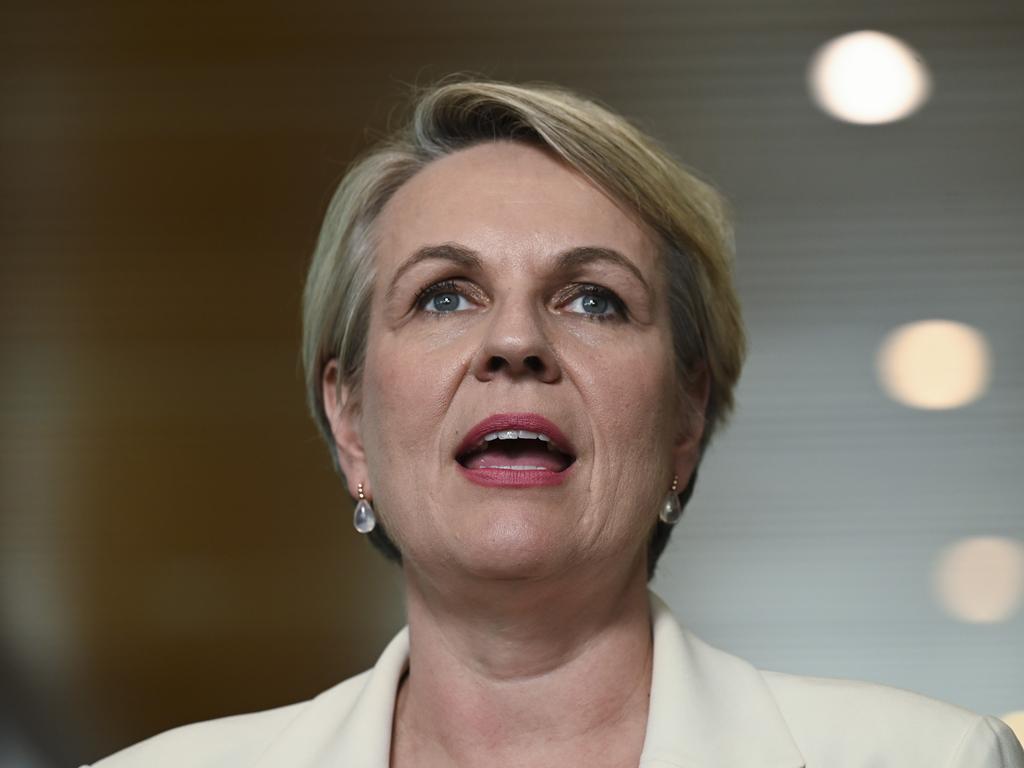Offshore wind logjam as four developers vie for same region
Victorian has offshore wind at the heart of its plan to transition from coal, but it must first untangle boundary fights as four big energy developers want the same zone.

Business
Don't miss out on the headlines from Business. Followed categories will be added to My News.
Victoria’s energy transition plan faces a heightened pressure as four heavyweight developers are vying for similar parts of the Gippsland sea bed, competition that could see some of the most viable projects eliminated.
Victoria has placed offshore wind at the heart of its plan to wean from coal. Victoria is Australia’s most coal dependent state and has set aggressive emission reduction targets that will effectively force the closure of the traditional generators by 2035.
The Australian revealed this month that the Federal energy department had quietly informed six developers they had been preliminarily awarded an offshore wind licence, and a further six were told they would need to resolve a boundary dispute after being found to be equally meritorious.
But The Australian can reveal that four of the six are vying for similar locations and have a boundary dispute, complicating the resolution and without a resolution - sources have said some viable developers could be eliminated.
The difficulty may also be escalated if any of the 24 projects that have been preliminarily rejected can reverse the decision of the Federal Energy Minister Chris Bowen, potentially swelling the number of applicants entering into mediation.
The Australian understands some of the world’s largest projects are in boundary disputes, including Shell and Origin - which partnered with RES Group - one of the largest offshore wind developers. It is not clear if either Origin or Shell are in the four developments vying for the same locations.
“I don’t think anyone is happy about complicating the issue by expanding the number of projects in boundary disputes,” said one senior executive who declined to be named as developers have been sworn to secrecy by the government, including a required non-disclosure agreement.
The Australian revealed last month that Flotation Energy, backed by one of Japan’s largest companies and earmarked as a leading developer of offshore wind in Victoria, had been denied a development licence by the federal government.
The Australian understands officials connected with Floatation Energy had hoped to sway the mind of Mr Bowen, but it is not clear whether efforts had been successful.
Mr Bowen is weeks away from revealing his decision on who will be awarded a so-called feasibility licence and then work on resolving the boundary disputes will accelerate.
Feasibility licences give projects exclusive rights over a region for seven years, which is critical for attracting investment.
The Australian understands projects earmarked for boundary dispute resolution were recently asked whether they would need 30 days or 60 days to overcome the border overlaps.
Sources said projects said the complexity of the boundary disputes could mean 30 days would be challenging but leaving it unsettled for 60 days might give those projects who receive their feasibility licence first a competitive advantage.
“30 days would be better as projects will want to be ready to participate in Victoria’s first auction for offshore wind,” said one source familiar with the industry’s thinking.
Victoria has informed would-be developers that they intend to hold its first auction to secure offers of generation in the first quarter of 2025.
Australia’s second most populous state intends to operate a contract for difference model, where developers will propose to build an offshore wind farm capable of generating substantial electricity output.
Under the deal between Victoria and developers, should the wholesale electricity price fall below an agreed threshold – taxpayers will compensate the renewable energy project. Should the wholesale electricity price exceed a metric, developers pay the government – a design that removes revenue risk from developers and accelerates much-needed investment.
It is not clear what will happen if Australian officials are unable to resolve the boundary disputes. Legislation passed to permit offshore wind allows for an auction as a final determination of who wins a licence, but industry sources said they suspected that would be a last resort.
Still, Victoria will hope for as many developers as possible as it pins its energy transition plans on offshore wind.
The Victorian government in 2022 set a target of generating the equivalent of about 20 per cent of its energy needs from offshore wind within a decade. The target then doubles to 4GW by 2035 and 9GW by 2040. In all, Victoria sees potential for 13GW of offshore wind capacity by 2050, five times the current renewable generation in Victoria.
The target has lured some of the world’s largest renewable energy developers and local giants to proposed developments off the coast of Gippsland, moving to capitalise on Victoria’s plan to use the zero-emission energy source as a major replacement for coal.
Victoria’s coastline is ideal for offshore wind. Winds are very strong and consistent by international standards, while a large area of shallow ocean less than 50m-60m deep is suitable for wind turbine platforms to be fixed to the seabed, a much more mature and cheaper technology than the floating turbines that have to be used in deeper waters.
Victoria’s plans, however, were dealt a blow this month when federal Environment Minister Tanya Plibersek vetoed a key pillar of Victoria’s offshore wind strategy, citing a “clearly unacceptable” risk to local wetlands at the port of Hastings.
More Coverage
Originally published as Offshore wind logjam as four developers vie for same region





